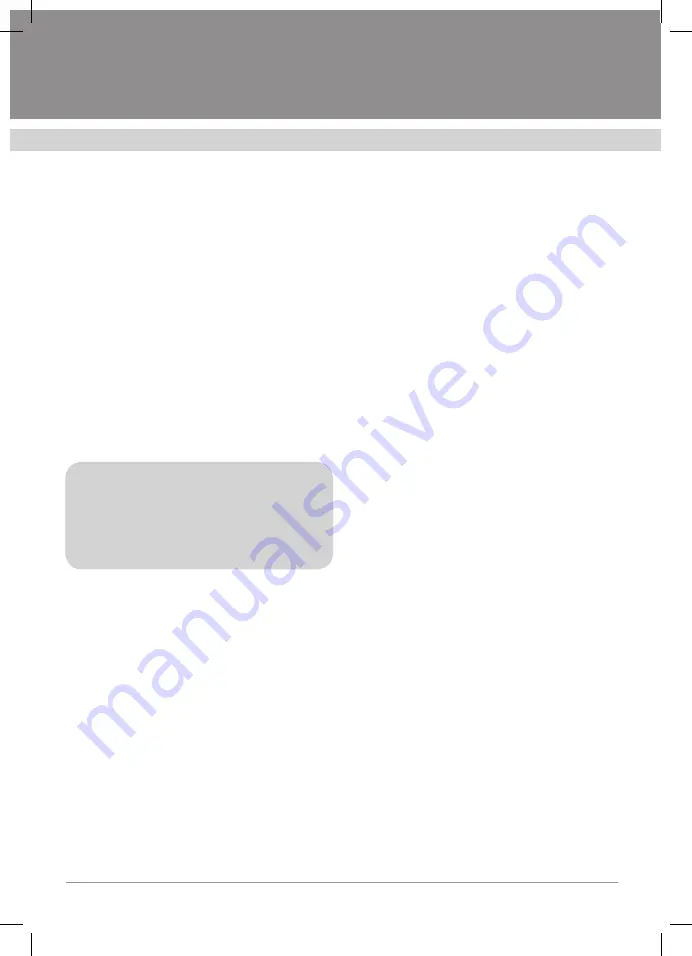
12
EN Application sheet
KITCHEN HOODS
– disconnect the kitchen hood from the power
supply and find the wire of the burnt lamp;
– disconnect the power cord in the connector by
pressing two petals of thekitchen hood cover,
remove the burned lamp;
– insert a new lamp in place of the burned-out
backlight lamp;
– connect the lamp power wire in the connector;
– connect the kitchen hood to the power supply
and check the operation of the lamps.
KITCHEN HOOD INSTALLATION
INSTRUCTIONS
These are only trained professionals who
are permitted to install and connect kitchen
hoods.
It is prohibited to begin the installation pro-
cedure and remove the protective film on the
kitchen hood made of steel, until you make
sure it is technically sound, connecting that
to an electrical power network and checking
all its functions.
For that, open the package, take the kitchen hood
out of it, place it upon an even surface so that the
mode selection switch faces an inspecting person.
After that connect the kitchen hood to the mains
and check its function. Check that in all modes,
and if it functions properly, you may begin the
hood mounting. If not, turn to the sales agency
where you have purchased the hood, or warranty
workshop.
It is recommended to remove the protection
film on the hoods made of stainless steel only
upon completion of the installation procedure.
Let us remind you that the hood mounting
height above an electric stove shall be 50 cm
at least, and 65 cm above a gas stove (Fig. 8).
Attention! It is recommended to install the
hood in tandem.
Before installation, make sure that the wall onto
which the hood is going to be mounted is stable
enough. To mount the hood and a strip to fasten
the decorative case, use males screws and wall
dowels, that correspond to a type of the wall in
your kitchen (reinforced concrete, gypsum plaster-
board, etc.). If the male screws and wall dowels are
in the scope of delivery, make sure they are suit-
able for the wall onto which you mount the hood.
Install the hood in the following sequence:
1. Before starting to drill the holes for the dowels
in the wall, markings must be made. Place the
hood bracket horizontally on the wall so that
when the hood is stretched to it, the necessary
distance to the table top is obtained. Make a
marking of the holes for fixing the bar (Figure
10). 2. Drill a hole of the required diameter.
The depth of the hole must correspond to the
length of the dowel.
3. Screw the installation bar into the drilled
places (fig. 10).
4. Install the plastic adapter flange (if not
installed) by fixing it.
5. Hang the hood body on the reference points A
and B according to the attached figure (Fig. 11).
6. If the hood is operated in the mode of
exhausting air to the ventilation shaft, one end
of a flexible duct with a diameter of 150 mm is
required (a flexible duct with a length of 1 m, if
longer, it is purchased separately) is to be put
on the adapter flange, preliminary smear it with
sealer and secure it with a clamp (available
separately). (Fig. 12) We remind you that you
can not use a duct with a smaller diameter
than 150 mm. The second end of the flexible
duct must be connected to the ventilation hole
in the wall. It should be taken into account that
the shorter and more straight (without bends)
the flexible duct is, the higher the productivity
is, there are less noise and less vibration in the
hood. If the hood will operate in recirculation
mode, a flexible duct is not used.
Summary of Contents for 00022883
Page 28: ...www krona steel com ...













































